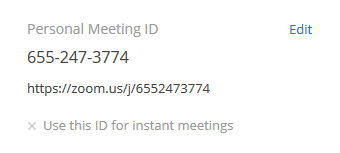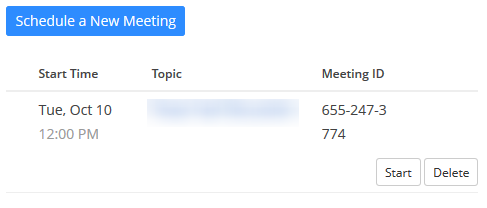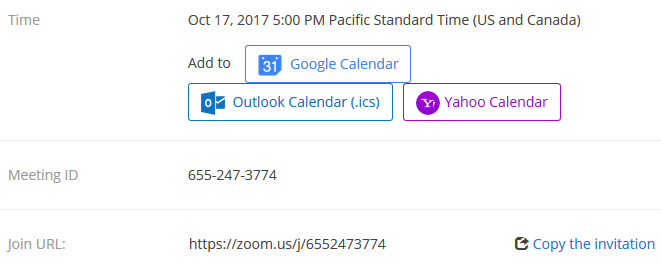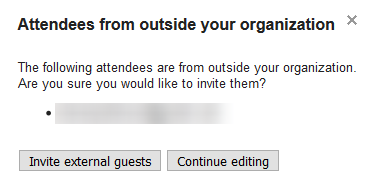Zoom Meetings¶
Tiger Sheep uses Zoom to schedule and set up its client meetings. Whenever possible, avoid using your phone or Skype for any client contact that needs scheduling.
Basics¶
Zoom Accounts¶
-
Accounts
User:
accounts@tiger-sheep.comPassword:The UsualUsed By: John-Michael, accounts staff
-
Development
User:
development@tiger-sheep.comPassword:The UsualUsed By: Developernebt staff only
-
Support
User:
support@tiger-sheep.comPassword:The UsualUsed By: Support staff
Basic Meeting Types¶
You have two options for setting up meetings:
-
Instant Meetings
The 'My Profile' tab when you're logged into
zoom.usgives a link that can be given directly to a client you want to meet with now.
Clients will be presented with a
waiting for the hostpopup when they visit the link and install Zoom, until you visit the link yourself and log in. -
Scheduled Meetings
The 'My meetings" tab allows you schedule a new meeting, and presents the user with a list of currently scheduled meetings.

If you have already scheduled a meeting, clicking the 'Start' button will send you to the Zoom application to start the meeting. If you aren't logged in, you will need to log into the application.
Scheduling a Meeting¶
Whoever sets up the initial meeting is responsible for being as accurate as possible when setting up a meeting. Specifically:
-
Topic: Be descriptive when titling the meeting, as this topic will be visible in email and on Google Calendar
-
Description: State the purpose clearly and in a client-friendly tone, so everyone can reference the purpose of the meeting.
-
Time: Make sure you are accurate with the time and date, keeping in mind the time zone. Zoom defaults to PST, but double-check.
-
Recurring Meetings: Zoom allows for setting up recurring meetings, which may be useful for weeklies with key clients
-
Audio: Ensure
Telephone and VoIPis always checked, in case a client doesn't have computer audio.
Sharing a Meeting¶
Once a meeting is setup, you are provided with a join URL and sharing options.

Warning
Zoom does not automatically set up client email notifications or a Calendar entry. You are responsible for notifying participants of the meeting! Best practice is to immediately click the Google Calendar button, to setup client notification emails and the internal Calendar link.
Clicking the 'Google Calendar' button leads you to a normal Google Calendar event setup page. Ensure you are using the correct account/calendar, add any participants that need an email, and confirm all details. Don't forget to save! On save, you'll confirm that an email is going out to invitees.

Warning
The is no automatic connection between Zoom and Google Calendar. If the time of the meeting needs to be altered, you must alter the time both in Zoom and in Google Calendar.
Hosting a Meeting¶
Hosting a meeting can be somewhat complex. Here are a couple of things to note and remember:
-
Be sure to add your audio
Hopefully you've setup your microphone setup prior to hosting for the first time, but be sure to hope into the audio channel either by computer or by phone so you can hear participants.

-
Use chat
If you are referencing a link during a call, use the chat instead of email to share it internally during the call
-
Use the record feature
Often, calls will reference information that it would be useful for us to be able to check back on later. Zoom allows for call recording, use it. Alternatively, some Tiger Sheep employees use screen recording software like Camtasia. Always ask to make sure all attendees are comfortable with the call being recorded!

-
Mind yourself while screensharing
Make sure you never accidentally show a meeting full of clients anything inappropriate while screen sharing. If you need to screen share, do a quick sweep of your open tabs and chat applications to make sure nothing might show up you wouldn't want a client to see. If a client-inappropriate Slack message or link pops up during a call, the blame will be on the presenter! Often, it's best to completely close Slack while in a meeting. You can also share whichever screen is not set to show notifications as an added safety net.
-
Keep an eye on the attendee list
If a call has ended and you are sticking around after to talk with only a small portion of attendees, best practice is to start a completely new call. If that would take too long, be sure to check who is still in the call, and manually boot out anyone remaining not involved in the current conversation.